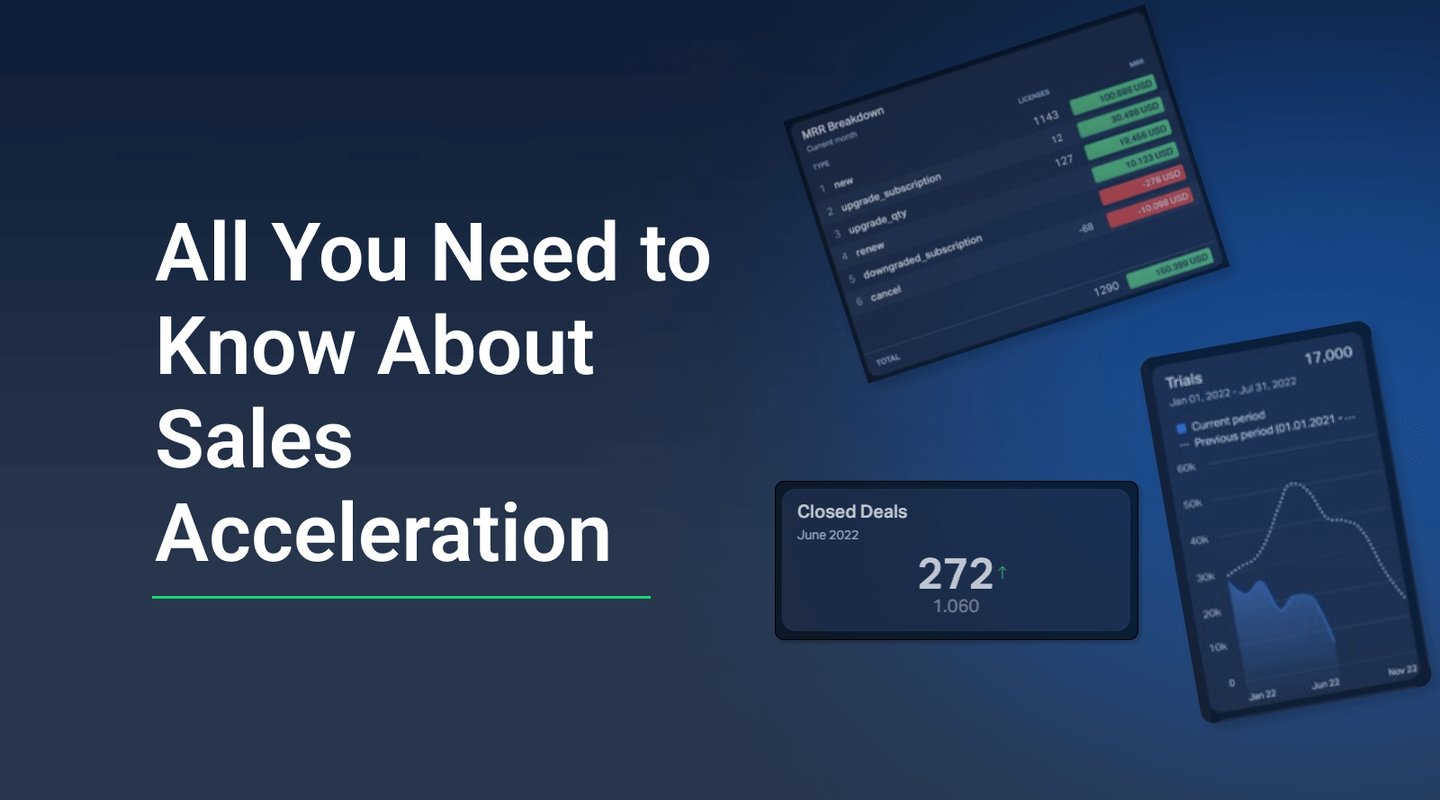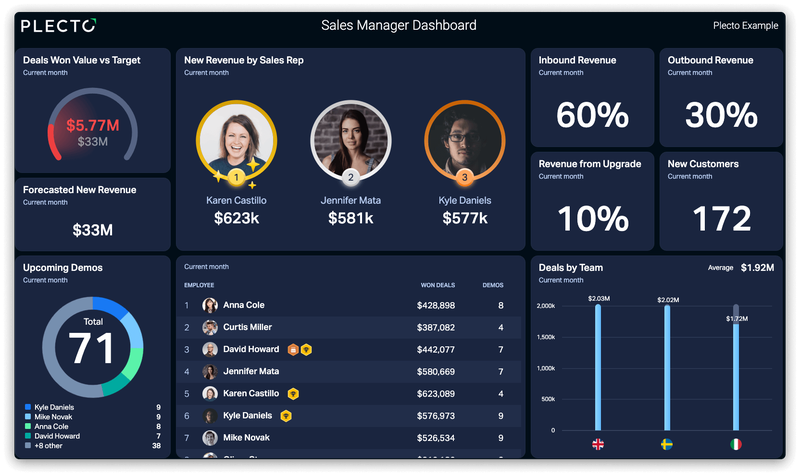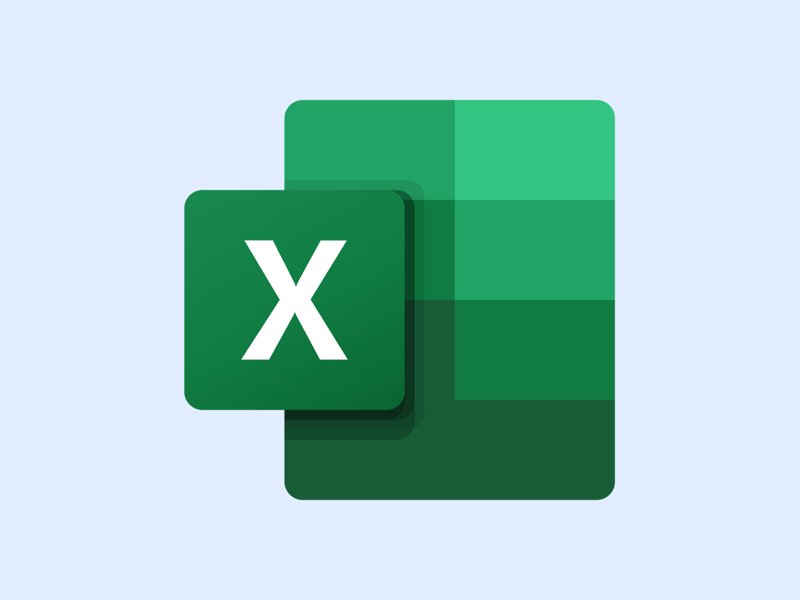If your idea of sales is backing prospects into a corner, pestering them with messages until they eventually make a purchase (or block your number), you’ve got it wrong.
The age-old practice of convincing prospects into making purchases is a slow, prolonged, inefficient use of your sales team’s time. There’s a way to close deals faster, and it doesn’t have to result in distant prospects.
Let’s dive into how you can close deals and form healthy bonds with customers to ensure sales acceleration.
What is sales acceleration?
Sales acceleration lets you close a deal faster without compromising customer experience. Think of it as mass-producing the Mona Lisa in a fraction of the time while staying faithful to the original.
When you apply this concept to sales, you scale sales automation while keeping every call and conversation tailored and personal.
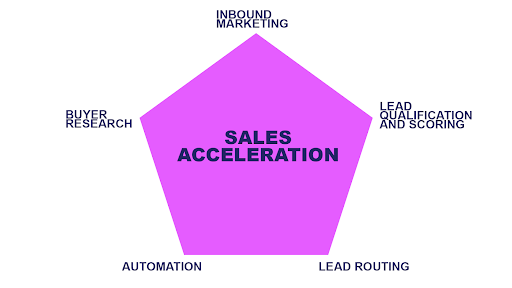
Some factors to consider in sales acceleration are if your sales reps are well-equipped and if your sales funnel can attract the right people in the first place. You should also check if you have the necessary sales acceleration technology, among other things.
Benefits of sales acceleration
Sales acceleration seeks and eliminates the factors that slow down your sales process. You’ll have more efficient sales representatives who have more engaging conversations with prospects when you do sales acceleration the right way. You’ll land more deals in less time.
When paired with a quality product, business solution, or service, your company will take off quicker.
Types of Sales Acceleration Practices
Different companies in different set-ups and industries will have different needs. You may apply any single or combination of these practices as you see fit.
Lead Qualification and Scoring
Lead scoring determines whether a lead is cold, warm, or hot. Using customer relationship management software, SaaS, and tracking tools, you can measure leads by the actions they’ve taken, such as:
- Read a blog on your website
- Downloaded a whitepaper
- Opened an email
- Clicked the CTA on an email
- Engaged in a call
Each action will be worth a certain amount of points. This customer data will rate if a lead is cold, warm, or hot. It will also allow you to determine what stage of the buyer journey the lead is in.
Some software solutions allow you to track the engagement for the emails and newsletters you send to your leads. The software returns valuable data to you, giving you insight into who your most engaged leads are based on email tracking metrics.
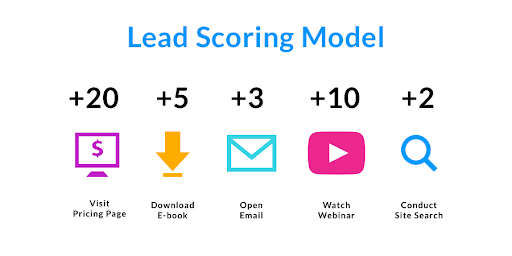
Lead scoring allows your sales team to prioritize calling hot leads instead of focusing on cold leads. It also accelerates the sales cycle as hot leads have a much higher close rate than cold ones.
Set up alerts each time a lead has entered the next stage in the buyer’s journey or has gone from a warm lead to a hot lead. Call your leads within five minutes. In fact, the quicker you respond, the better. Online leads, in particular, get cold quickly. The Harvard Business Review found that companies that responded within an hour of receiving a query are almost seven times more likely to qualify the lead than companies that contact them 24 hours later.
You should also apply different approaches to leads in different stages of the buyer’s journey.
It would help if you didn’t sell your product on the first try. Instead, your sales email sequence needs to introduce your brand first, discuss customer pain points on the second email, etc. You can check out sales email sequence examples for inspiration.
Buyer Research
The end goal of buyer research is simple – to understand your prospects more and approach them with a sales pitch that makes them take action.
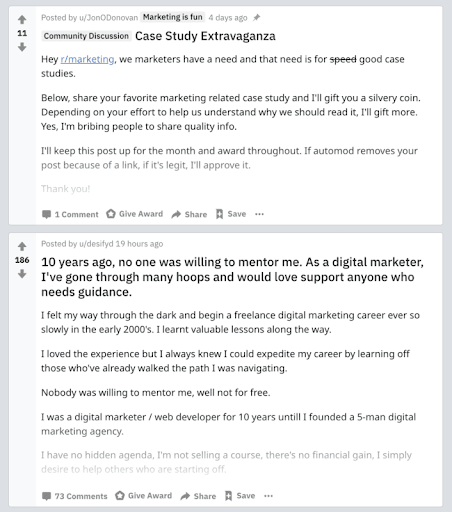
Here are some effective buyer research practices:
- Engage in online niche communities where your prospects are likely to hang out.
- More listening means less talking in sales calls.
- Create a focus of individuals within your prospect niche.
Buyer research will allow your sales team to create more personal non-generic sales pitches. That improves sales acceleration by establishing rapport, thus creating better engagement between seller and prospect.
Inbound Marketing
Your marketing teams should also be involved in your sales process.
Inbound marketing is a kind of marketing that involves speaking more like a consultant than a door-to-door salesman. This kind helps buyers research their problems and determine what’s best for them. This research is usually aided by different types of content, whether social media or blog posts.
Content management, a social media calendar, even guest blogging, and affiliate content are some effective inbound marketing practices. You also ought to equip your marketing team with marketing automation software, just like you would your sales reps.
Consumers who research their problems before a purchase have a good chance of getting influenced by your content and are more likely to have an engaging conversation with your sales team.
Build your first dashboard.
Start your 14-day free trial today
Automation
To collect data efficiently, automate the data collection for your sales team. Your sales team should focus on selling, not logging every call, email, and outreach. Various CRM and sales engagement platforms allow you to set up automated processes to assist the sales rep.
Sales success hinges on bringing out the best in your sales reps. If they’re focused on selling, you’ll close more deals quickly.
Lead Routing
Lead routing is assigning a lead to a seller that you think will provide the best customer service. That will be based on the data gathered in your buyer research, the steps the lead took in the buyer’s journey, their expertise on the type and category of product, among other things.
By pairing a lead with a sales rep that you see have something in common, you optimize the customer experience and better the chances of closing deals.
A real-life example of sales acceleration
Mark Roberge, former CRO of HubSpot, narrates his experience accelerating sales in a talk with Google. He also wrote a book about it called The Sales Acceleration Formula. Here’s how it went:
HubSpot had their sales team imagine themselves in their prospects’ shoes. Since HubSpot is a marketing software solution, HubSpot had its salespeople use it just like a marketer would, incorporating buyer research into their sales training.
That made the salespeople’s workflow similar to a consultant’s — having a personal approach with each prospect.
HubSpot also invested in inbound marketing. When you have questions related to digital marketing, Hubspot seems to have content that appears on top of the search results.
This strategy gives them a hand in every possible query any marketing-focused individual may have – be it about color combinations for a fantastic website or an in-depth guide to using videos for marketing.
The combination of inbound marketing’s demand generation plus immersion-level buyer research makes HubSpot’s sales process very consultative. Using this method, HubSpot grew from a $0 to a $100M successful company in a seven-year time frame.
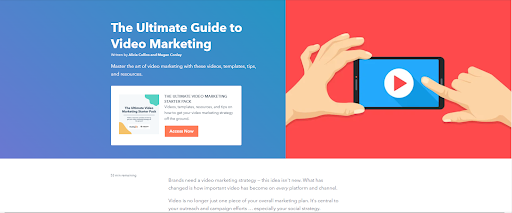
How to get started with sales acceleration?
The concept of sales acceleration can seem intimidating. You need to take measured sales management steps before going full blast with your sales efforts.
Assess
See where the problem lies. An entire article can be dedicated to just the assessment stage of your sales acceleration process. Here are the questions you should ask yourselves:
- Are we using the right tools for our team? That is one of the most important questions since many sales acceleration processes can be directly linked to your software.
- Do we have a solid idea of who our target market is? Have a buyer persona in mind.
- Are we investing in inbound marketing? We should.
Is your team using the right tools? If they’re not using any sales automation tools, you can evaluate solutions with your desired features and pricing.
Your sales tools should give you data on how many calls the salesperson has made, how many demos and deals were closed, your average handle time, and help your sales team determine if a lead is cold, warm, or hot.
It would help if you had an effective sales acceleration solution to keep track of key performance metrics generated by your sales team.
Only after you acquire crucial data can you assess your team’s performance. The software you use will help you determine who’s performing and who’s not, enabling you to place necessary rewards and sanctions.
Craft a buyer persona for every stage in the buyer’s journey. You know when you need to craft a persona to ensure your recruitment plan or your PR plan is effective? Well, it’s the same in sales. From lead generation to hot lead, you need to determine the buyer’s age, gender, interests, and what their day-to-day would look like. Does the buyer have a day job? What sort of shows and movies does the buyer like?
The more questions you answer, the more detailed your buyer persona becomes.
Moving deeper into the buyer journey, you may tweak this personality. Perhaps their interests have changed. Are they into website creation now? How about digital marketing?
Take a look at your current marketing efforts as well. You’d want much inbound marketing to be at the top of your funnel. Influence your research habit. Nudge them into using your brand as the solution.
Strategize
Suppose you’ve performed the assessment process correctly. In that case, you should already have an idea of 1) what kind of functionality you’ll be needing from your sales tools, 2) your buyer persona, and 3) your current marketing efforts.
Once you have those, have a proper methodology in place.
Select your tools carefully. Factors to consider would be:
- The size of your salesforce
- Your company’s budget
- How much time your sales team is spending on non-sales activities?
From your buyer persona and your current marketing efforts, create an inbound marketing campaign that involves creating a content strategy, whether in-house, blog-posted, collaborated with an affiliate, or outsourced.
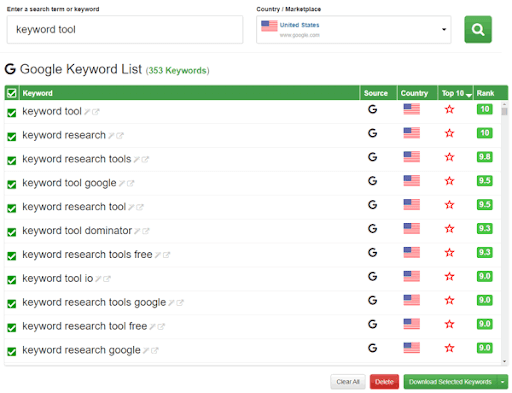
Do keyword research on what leads in each buyer’s journey stage will search for. Have a content growth model and content management system for planning what’s to be published.
When you consistently publish content that answers customer questions, you will get more leads that you can push further down the funnel.
Implement
At the end of the strategizing phase, you should know what tools you’ll use and the necessary keywords for your inbound marketing content. Now comes the easy part – implementing.
Your sales leaders should train your sales reps properly regarding implementing the sales strategies. If your team doesn’t know how to use the software you’re paying a premium for, it will all be for naught. Dedicate a day or week to get your team accustomed to the new software.
If you’ve set up an automation process across different apps, let your sales team know what they can expect. (i.e., They don’t have to log calls anymore, they don’t have to send welcoming emails anymore, etc., manually).
Moving on to marketing, once you have your keywords ready, have your content team create titles and outlines to be filled in by your writers. You may create a combination of in-house blogs for your domain and guest posts that you’ll create for other domains.
The most critical part of implementation is that you consistently implement these policies and measures. Data gathering should also be part of your team’s daily tasks. That will allow you to adapt to changes, if any, quickly.
Conclusion
There are different ways to implement sales acceleration and optimization.
Lead qualification and scoring is a way of qualifying leads based on their online behavior and activity. Buyer research is studying the habits and interests of your niche.
Lead routing connects different leads to different sales reps depending on who the leads are more likely to resonate with. Inbound marketing capitalizes on the research habit of some consumers by creating blogs that will draw them to your product.
Automation is automating tasks such as logging calls and collecting performance data.
Assess your current set of tools, target market, and marketing strategy. If you have a gap in one or more factors, you should create a sales management plan to address it carefully.
Using the right tools is a massive part of automating your sales team’s day-to-day activities. Strategize a plan to address the gap in any or all of the three queries, and implement it consistently.
Following this guide will help you optimize your sales organization and quickly grow your company.
Build your first dashboard.
Start your 14-day free trial today
Frequently asked questions about sales acceleration
Listed below are some FAQs on sales acceleration. Read through them to address any information gaps you may have.
How do you accelerate sales?
Research your buyers, and implement inbound marketing to address the pain points of your target market. Qualify your leads and prioritize hot leads.
Route each lead to a salesperson, and automate this process using sales acceleration software.
How do you make a sales flow chart?
That will depend on the model you’ve implemented. But a helpful tip is to draft a buyer’s journey, showing the different media and blogs they’ll likely go through, and then in that journey, place points at which your sales team becomes involved.
It would help if you also determined at which stage they would be considered cold, warm, or hot. The idea of this flow chart is to visualize the bigger picture and have a blueprint of the entire sales process.
How do you accelerate a closing deal?
If your sales team is well-equipped with buyer research information, they’ll be able to provide a consultative call to your hot leads. That means they’ll be much more effective and likely to close deals with prospective buyers.
How would you do that? 1) Score leads based on actions they’ve taken, such as reading a blog, subscribing to your newsletter, reading some emails, and then 2) Call those leads with your stellar sales team, where they’ll assist the lead in arriving at a decision.
What is an excellent way to close sales deals faster profitably?
Focus on hot leads as those leads close much faster. Once you have a system of scoring leads, notify your sales team immediately about any lead that has turned into a hot lead. Sales automation software will allow you to do this.
Nico is the founder of Crunch Marketing. The company works with enterprise SaaS clients, helping them scale lead generation globally across EMEA, APAC, and other regions.
